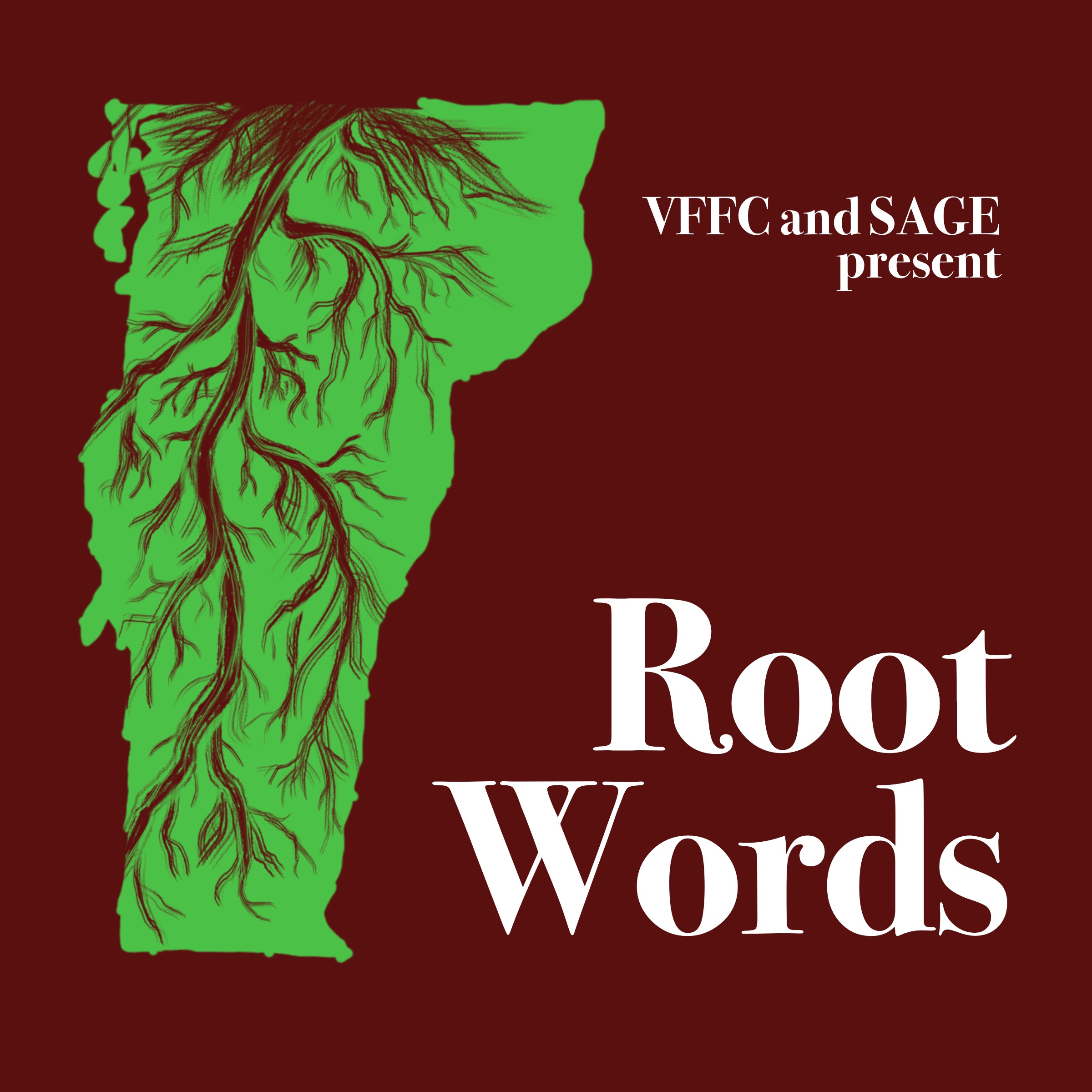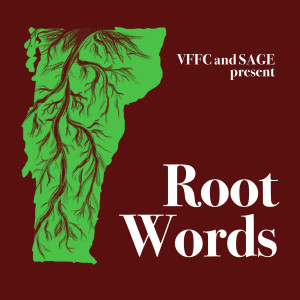
5.6K
Downloads
32
Episodes
Root Words showcases stories of how food and agriculture connect us with our community and our landscape. Root Words is a collaboration between Vermont Farmers Food Center, Shrewsbury Agricultural Education & Arts Foundation, Shrewsbury Historical Society, WEXP, and many other community members. The project is based in Rutland County, Vermont.
Episodes

Monday Feb 19, 2024
The Making of an Urban Food Center
Monday Feb 19, 2024
Monday Feb 19, 2024
Welcome back to our fourth episode of a five-part miniseries exploring how a focus on local food builds relationships with people and the environment. If you haven’t followed this miniseries, you may want to go back and listen from episode 26, Localizing the Regional Food System.
In our last episode we explored some relationships that people have with their foodways and some of the impacts that are felt when these relationships are damaged. And we heard how some folks are restoring their communities’ relationships with the land and with each other.
If the community food web relationships are strong and vibrant, it may become possible to create a physical space that can be an active center to the web, providing enough general use attributes for the entire web to thrive.
In this episode, we’ll explore Vermont Farmers Food Center's plans to rejuvenate the historic buildings at 251 West Street in downtown Rutland, Vermont and build an urban food center on the site of the former Lincoln Iron Works.
Buildings aren’t usually what comes to mind when we envision a vibrant local food system. We may picture a densely cultivated field or perhaps a farmer chatting up customers at market, but like many background players, buildings- physical spaces to work, gather, warehouse, and create- play a vital role in our food system.
In a globalized food system, buildings like this are often faraway and out-of-sight, increasing energy demands for transportation while decreasing accountability to the community of consumers.
Likewise, our own towns and cities often have “out-of-sight” spaces that fall into decay after their initial era of usefulness has waned, sometimes even becoming dangerous liabilities for the community if left inactive for too long.
251 West Street in Rutland, Vermont is just this sort of site. The 2.9 acre industrial site hosted many forms of manufacturing over the past 170 years. Notably, the Lincoln Iron Works centered a thriving community that anchored families and adjacent businesses to Rutland, but like many manufacturing centers in the U.S. the gears eventually ground to a halt when the globalizing economy shifted this work elsewhere. Local historian, Jack Crowther, has researched this site’s rise to prominence and subsequent fall into disuse.
Adaptation and reuse of aging infrastructure provides a path forward that revitalizes neglected, once-thriving areas, and protects open spaces from unnecessary sprawl.
Lyssa Papazian has been working for 30 years in historic preservation and is now based in Putney, Vermont. Vermont Farmers Food Center brought her in to assess the eligibility of the buildings at the 251 West St. site for listing on the national historic register.
Lyssa says that historic preservation and adaptive reuse are starkly different. Preservation is important in some instances, but its use is narrowly appropriate.
Today in Rutland, a local food movement is reigniting the community and the people that fill the historic architecture with purpose will adapt it to further use, ultimately keeping the spaces relevant.
My grandfather Peter worked in the Lincoln Ironworks during its last great phase of output for the war effort. My great grandfather Pasquale worked in the Lincoln ironworks even before that in the 20’s. During Pasquale’s days at the Iron Works, the factory workers unionized and joined the American Steel Workers to push back against the power dynamics of that day’s economy.
Farmer and Vermont Food Center founder, Greg Cox, has shown similar determination that those fellas would have respected by having the audacity to revive an aging factory through a driven community effort, ultimately pushing back against the centralized power of today’s global food system. In 2012, when area farmers and food producers needed more space, Greg saw the potential of 251 West Street.
Farmer, author, and VFFC board member, Philip Ackerman-Leist, has learned that providing opportunity in the middle of the food system is a critical component to overall food system resiliency, and that a large former factory might be an ideal location for a community food web hub.
In many ways 251 West Street is the ideal location. Unfortunately, sometimes our past catches up to us, and we are faced with confronting it. Before Vermont’s farmers ever created organic food guidelines that pushed back against conventional chemical agriculture, that industrial chemical legacy was already entombed at 251 West Street from a long history of manufacturing and subsequent neglect.
In 2021, as VFFC was furthering the reuse efforts of the site, an environmental assessment of the property revealed trichloroethylene or TCE contamination. TCE is a known carcinogen, and was likely left behind from industrial degreasers used in the mid 20th century.
After the contamination was discovered VFFC shut down the old Iron Works building, now called Farmers Hall, on the 251 West Street site. This forced the winter farmers’ market to relocate in the middle of the season and caused disruptions to the pandemic-era prepared meals program.
The plan to adapt this piece of the city’s industrial past to create new local food opportunities, seemed to be in jeopardy.
The board and staff of Vermont Farmers Food Center had their work cut out for them.
The folks at VFFC are addressing more challenges left over from an outdated globalized economy than they initially set out to, utilizing state money and grant money to do so. Lyle Jepsen, Executive Director at the Chamber and Economic Development for the Rutland Region is optimistic about the effect a food hub will bring to county wide redevelopment efforts.
This time around the site’s closure didn’t stop all momentum and lead to further decay, this time there was a network built around the continual use of this space. Today’s community food web was strong enough to overcome the weight of the site’s history.
On the next Root Words we’ll hear how Vermont Farmers Food Center’s remediation and adaptive renovation efforts are set to support the community food web and create a more circular, localized economy where we all thrive together.
This episode was produced by Stephen Abatiell and Julia Anderson.
Special thanks to Jack Crowther, Lyssa Papazian, Philip Ackerman-Leist, Greg Cox, Lyle Jepsen, and all of the people who have brought life to 251 West Street over the years.
If you would like to learn more about the history of the Lincoln Iron Works in Rutland you can find a link to Jack Crowther’s Rutland Historical Society report on Vermont Farmers Food Center’s website, under the “About” tab. You can also see VFFC’s building renovation plans, visit their website at www.vermontfarmersfoodcenter.org
Root Words is produced in the heart of Rutland County Vermont and is made possible by generous support from listeners like you. You can support Root Words by visiting us Online

No comments yet. Be the first to say something!